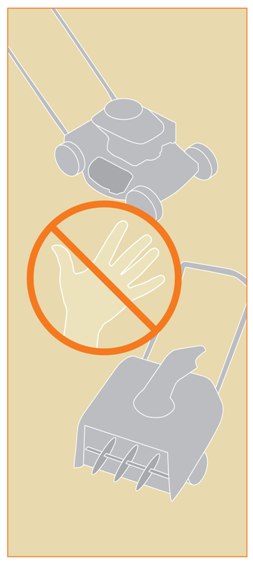Introduction
Although snowblowers and lawnmowers have made life—or at least home maintenance—considerably easier, these machines have the potential to cause severe damage to the hands. Usually, these injuries occur when the operator tries to remove an object that is “stuck” in the machine. As one might imagine, the blades of blowers and mowers are quite sharp and therefore can cut through all of the structures in the hand—even bone!
How to avoid injury
There are several key safety tips that can keep you out of the office of a hand surgeon:
- Never put your hand or fingers near the moving parts or intake or output areas of snowblowers or lawnmowers. If there is an object in the way of any part of the machine, the machine should be turned off and the spark plug disconnected (or power cord unplugged for electric models) before attempting to remove the object. Objects should then be removed with a tool and not the hand or fingers.
- Snowblowers and lawnmowers should also be turned off, spark plug disconnected, and unplugged when they are being moved or picked up.
- Do not try to lift a machine from the bottom; even if a lawnmower is not running, the blades are sharp enough to cause serious injury.
- Wear non-slip, closed-toe shoes to prevent slipping under the machine. Also, gloves can be somewhat protective, but the force of the machine still can cause extensive damage despite glove use.
- Never allow children to operate or be near the machine while in use.
What to expect if you sustain a snowblower or lawnmower injury
Unfortunately, these injuries can be extremely severe and often lead to multiple finger amputations. Infections are common and antibiotic medicines usually are necessary. Frequently, multiple surgeries are needed to clean wounds and repair damaged tissue. Unfortunately, most patients with these severe injuries never recover full, normal use of the hand. Oftentimes, fingers have been partially or completely amputated, and remaining parts might not have full motion or feeling. Multiple surgeries and many months of hand therapy are usually necessary to maximize movement and function.
Future treatments
There is much research underway to improve repairs and reconstructions of mangling hand injuries. Medicines that are placed during an operation might improve nerve healing. Newer suture methods and materials might help improve movement of fingers after surgery. Advances in microsurgical techniques have improved the results of replanted fingers and hands, but if the fingers are too severely crushed and damaged, they might be beyond repair. Prevention of injury by careful operation of these machines is the best approach!

Figure 1: After the machine is turned off and unplugged, any obstruction should be removed with a tool and not the hand or fingers

